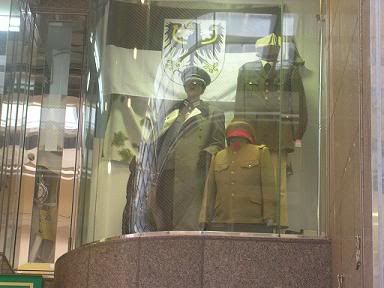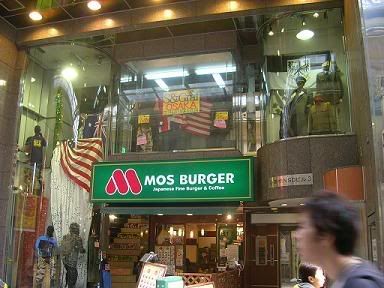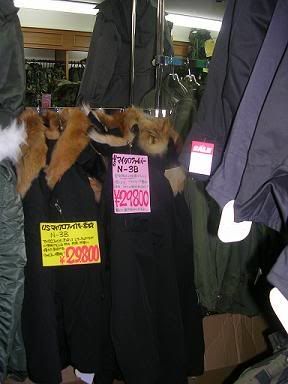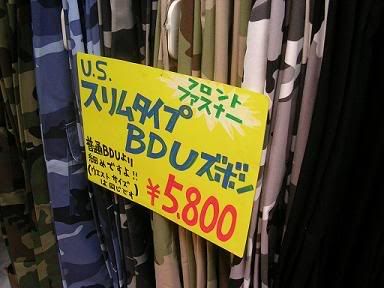Sunday, April 27, 2008
China - A Political Issue in Japan? What?
1)China Airlines
So, when I arrived in Japan back in August last semester and arrived at my home stay, here's what greeted me immediately. My host mother freaked and asked me randomly (or so I thought) if I had flown in on China Airlines. I had not. She was immediately relieved and told me that the news had just recently said that there was an explosion in China from a malfunction in the aircraft. But that's not all. She then said that after she heard this, she wasn't even going to buy food from China (I wonder how she managed that). Because, clearly, food and airplanes are intimately connected.
2)China's Toy Industry
Or, take for instance when we started hearing how lead was found in products sold in the US (and other places) that were made in China. It was the top headline for oh, three or four weeks, and the whole time I had the pleasure of enduring "and why isn't the US outraged about this?" Oh, and once again, our family would be boycotting anything Chinese for the time being.
3)Food Poisoning from China?
So, in January, there was an account near Hirakata of a person who had gotten food poisoning from eating gyoza. This was most disappointing news for me, because it meant yet another boycott of all things Chinese and gyoza is, quite possibly, my favorite food in Japan (we cannot get it where I’m from in Arkansas). To make matters worse, when I went and had made-in-Japan gyoza after a month of being deprived, you would have thought I’d tried to commit suicide by the way the host mother fussed. Just this past week, we finally started to have gyoza in the home stay again. Japan-made only. And oh it was so good.
4)Beijing Olympics
This brings me to the latest topic in Japan-China relations: the Beijing Olympics. Anyone who has been watching the news at all knows that Beijing is certainly under international attention. So it isn’t surprising that this has come up in Japan. What surprises me, however, is that the issue is much less charged within Japan than it is outside of Japan. I guess there are economic reasons for this. The host mother hasn’t yet spoke of boycotting Chinese products again. In fact, Japan’s stance on the issue has so far been much more traditional, meaning that at least in the case of the torch relay, the actual route (citing the probability of riots) is the only thing that will change. Prime Minister Fukuda himself has also said that Japan will not boycott the opening ceremonies either. But that doesn’t mean there aren’t protests in Japan either.
The point is that just in the time that just I have been here, Japan and China haven't exactly been on the best of terms, and that doesn't look likely to change. Please don't take this to mean that I am saying that China=bad and Japan=good; Japan has done its fair share of evils to China. But both sides seem to sensationalize the issue and take it too far (boycotting food months after the poisoning incident was over?). Such, unfortunately, is the nature of Japan-China politics.
Monday, April 21, 2008
Is that who I think it is?

Do you recognize this person? Found in Shinsaibashi-suji, directly across the street from the Subway and directly above the Mos Burger. Yes, it is indeed who you think it is. Complete with ridiculous mustache and everything. The only thing missing is the Nazi flag (that's inside the store). The question is, what in the world is Hitler doing in Japan?

Well, in this instance, he's advertising for a military clothing store. Him and good ol' glory. Two things that, according to the culture in which I grew up, should never ever be seen together. So is this a political statement? No, I don't think so. First, they are more easily associated with what is inside the store than with each other. If they are meant to be associated with each other in any other way than that, both countries represent the most powerful militaries Japan has seen on its shores in recent history. Japan’s own military pre-1945 was based off of the Prussian Army (found via my Japanese Fashion book that chronicles Japanese fashion from Meiji era to present). The post-1945 Japanese self-defense force, on the other hand, is heavily influenced by the American model. Also, Japan’s greatest ally pre-1945 was Germany, whereas Japan’s largest political partner post-1945 is the US. But I don’t think that’s why this shop has Hitler and the US flag just hanging out in its display.

This store is two stories of military uniforms. Those of the US style are fairly modern and are accompanied of images of soldiers in a desert, holding some serious weaponry (photos from Iraq? Naaaaah, course not). Most of the US style uniforms are Army camouflage, with the exception of one small group of coats. The only other style of military uniform I found within the shop was German, designed to look like something straight out of the 1940s as well as more recent variations. They aren’t really separated by floor so the US camos and German military uniforms from all eras just kinda hang there together, separated only by hand-made signs that say where the clothing originates from. Other merchandise in this store includes combat boots, army tents, nets, and just about everything else you might consider military memorabilia. The only thing missing from this shop was a gun department, but this is Japan so we can’t have that… On the second floor, you aren’t allowed to take photos, so I don’t have a photo of the Nazi flag hanging over the entrance to the staff room. The sign was in English, so I couldn’t exactly use the “I’m sorry, I couldn’t read it” excuse.
< P>
US Army coats for cold climates. In the corner where you can’t see are the German variation, according to the signs.
I’m just reporting what I saw. Again, though I don’t think there is much of a political statement to this store—the point of the store is fashion, not politics—I’m still not sure I’m exactly comfortable with the two very different ideologies presented here. You certainly would never see this sort of thing in the US, but then again, Japan doesn’t have a history of several years in which it was at war with Hitler and his atrocities. If I wore a 1940s replica Nazi uniform in the US, that would be suicide, but in Japan the point is that it is fashion. It’s not a political statement; it’s not an affiliation thing (except that you’re affiliating yourself with other people who dress this way for fashion reasons). It’s fashion, which means it’s part of that group of materials that both does and doesn’t make a statement at the same time.

And it’s an expensive fashion to follow. This was one of the cheapest prices I found in the entire store.

It feels really weird to me to see US army jackets in Japan (real or not) for sale.
Monday, April 14, 2008
Volleyball in Japan
That's why it surprised me so much to find out that Japan has a National Men’s Volleyball team that gets national attention. Last semester, during volleyball and soccer (excuse me, football) season, all that was on at my host family’s house was the latest game. And volleyball had priority over soccer. What was even more amazing was that men’s volleyball took priority over the news, which until volleyball season had previously enjoyed number one priority in the Yuasa family’s list of acceptable programs. The usual cartoons (even Yoshi’s adored pokemon and Aki’s adored maruko-chan) were pre-empted, there was a significant decrease in the family’s knowledge of current events, and all the family’s activities would be rescheduled according to the schedule of the Japan National Men’s Volleyball team. Aki would skip juku on game night, Yoshi and her friends would reschedule their band practice, Hiroko-san (the mother) would come home unusually early from teaching at her English school. In fact, the only person who seemed unaffected by volleyball in the Yuasa household was Katsu-san, who would come home later than usual and bring a newspaper to read, having come to terms a long time ago with the fact that his usual news hour would not be allowable on game night. Even yours truly was caught up in the volleyball madness, though I had my own ulterior motives—both the games and the conversation in the commercial breaks were fantastic Japanese practice!
There is nothing that defines volleyball as strictly feminine in Japan. The men’s team had just as much (if not more) coverage as the women’s team. Neither was preferred over the other. And if there wasn’t a game, you could almost be guaranteed to see the team members on all of the regular game shows. And heaven forbid that the international home-stay student forget the names of the team members! The normally very quiet Yuasa household would erupt in loud cheers of joy whenever Japan won its match. It was like football season at the University of Arkansas; complete with cheerleaders, fanatics in the stands, everything, and all over volleyball.
Consequently, the current shrine at the Yuasa house is not to any kami and it is not a butsudan. It is a small placard, signed by Panasonic and Aki’s favorite member of the volleyball team.
Kanashibari
Two pieces of background information. First, I occasionally attend a bilingual church in Kyotanabe, along with a few other Kansai Gaidai students, both International and Japanese. I have been attending off and on since November and we have two hours after the message to talk to each other about anything and everything. During the course of conversation, we drifted to kanashibari, and to former and current members of the church who had experienced kanashibari.
Secondly, kanashibari is the Japanese word for a medical condition called "Sleep Paralysis." Kanashibari can also mean “night-terrors” but the discussion I had with members of my church on kanashibari sounds much closer to sleep paralysis. What happens in sleep paralysis is quite simple: you wake up and though your mind is conscious, you simply cannot move your body. This is not lucid dreaming (where you are aware that you are in fact dreaming DURING a dream) because sleep paralysis does not happen while the mind is asleep.
Now how does this tie into religion? As you probably already know, the percentage of Japanese who claim to be Christians is in the one-digits. The predominant religions in Japan are Shinto and Buddhism, followed by other “new religions,” while Christianity enjoys even fewer proclaimed practitioners. The church I attend is small and the building is never completely full (though we came rather close to filling the sanctuary on Easter Sunday, but that’s to be expected). And yet, repeatedly, someone who experiences kanashibari will come to the Kyoto International Chapel, talk with a pastor, convert to Christianity, and never have the problem again.
It’s such a frequent phenomenon in converts at Kyoto International Chapel that they have even created a manga about it, containing two testimonies of people who suffered from kanashibari and were cured upon conversion. The manga is short, sweet, and simple and is published in both Japanese and English. I have since given my Japanese copy away but the pastor is currently searching for the English copies so that I can post photos here.
The story, as explained to me in English (since my Japanese is not the most fantastic in the world), goes something like this. The individual (both testimonies in the pamphlet-manga are female) will begin experiencing kanashibari and the reoccurring feeling is that they are being held down, like something invisible is crushing them and keeping them from moving or even blinking their eyes. They try to solve it in the traditional Japanese way (go to a shrine or a temple), but that does not work. Eventually, in a completely unrelated event, a friend will invite the afflicted individual to Kyoto International Church. They will come and eventually they will talk to the pastor and convert to Christianity. They will also tell the pastor about their experiences of kanashibari and, after praying about it with the pastor and converting, the experiences will never happen again.
Just thought it would be interesting to share. I was surprised by how many members of the church experienced this. I’ve never heard of anything like this before. (photos as soon as I have them)
Tuesday, April 1, 2008
Flower Viewing
Not exactly. For starters, it’s illegal in Japan to take any still-growing cherry blossoms (according to nearly everyone I spoke to). It’s still frowned upon to take what’s already fallen to the ground, and besides, who wants a flower that’s been walked all over anyway. Except me, of course.

Secondly, it’s perfectly acceptable (if not outright encouraged) to take an entire weekend simply to go hanami. You can do it with anyone, though most people in Japan do it with their family and friends. And that’s all they do all day long--they sit under the cherry blossoms, have a picnic lunch, drink some sake, and just sit and chat. All day. Maybe get up to go take some photos of particularly impressive cherry blossom trees in the immediate area.

What if you forget to pack a picnic lunch/dinner? No problem! Just stop by one of the many little booths all around wherever it is you’re going hanami (assuming you’re going to a fairly well-known place) and buy some Japanese snack food. You can get takoyaki, squid and octopus on-a-stick, eggplant fries, and candied fruits of all sorts (my personal favorite is the candied strawberries). Sounds like a fantastically nutritious meal to me.

The interesting thing about hanami though is that hanami is also an acceptable corporate outing. How do we know? Because they come in their business suits, reserve a length of blue tarp (I wonder if they stole it from a homeless person--Osaka Castle park was remarkably homeless-blue-tarp-tent-free the day I went…) and sit, still in business apparel, and enjoy hanami while grilling fish and eating other snacks under the cherry blossoms. I wonder why we don’t have this in the US. You know, take the company out to the park, give everyone the day off, sit under the magnolia trees or on a hill full of daffodils (hey, that’s what we’ve got in Arkansas), drink some beer… It would definitely boost employee moral.
On my weekend of hanami, I saw many corporate groups like the one above, most in Osaka park, but a few in Kyoto. I also saw several clubs (noticeable by their matching jackets) and a choir (noticeable because they were singing) at yasaka shrine in Kyoto, and in Ise…

There was a harley-Davidson biker group, all the way from Kyoto! Oh how it makes me smile. They were there to enjoy cherry blossoms at the inner shrine, just like us, and they were doing it in their leathers and Kyoto and Harley biker patches. All in all, my favorite find of the day. And I was beginning to worry that Japan didn’t have biker groups.
So, as you can see, hanami is a highly sophisticated form of entertainment in Japan that stretches across all sorts of networks within Japanese culture.